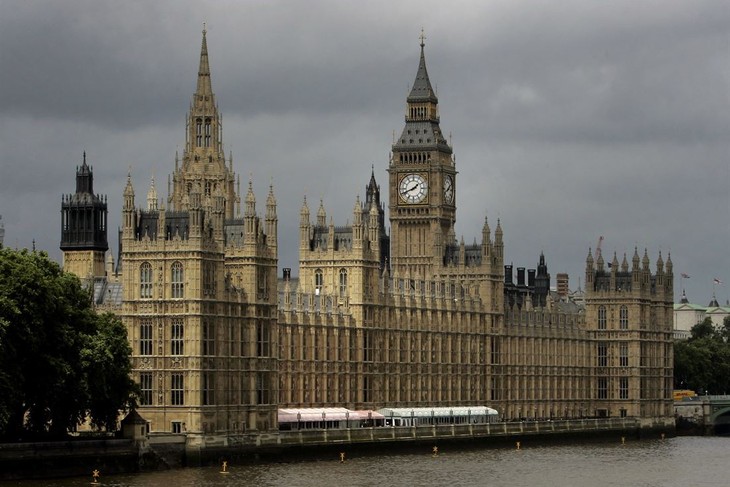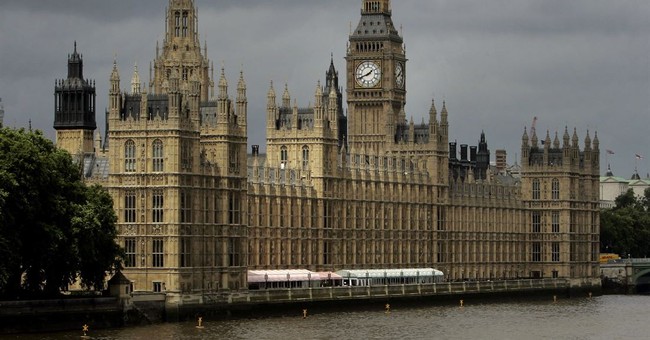By TYLER O’NEIL

On Tuesday, Britain’s High Court defended young children from the transgender movement’s rush to give kids experimental drugs that put them on a path to chemical castration. The court laid out a framework for considering whether minors under age 18 might be able to give informed consent to receive experimental so-called “puberty-blocking” drugs intended to treat gender dysphoria (the persistent condition of identifying with a gender opposite one’s biological sex).
In a groundbreaking ruling that should set the standard for such complex issues, Dame Victoria Sharp concluded that puberty-blockers are experimental, that their effects are not “reversible” as transgender activists claim, and that in order to consent to receive such drastic treatment, children must understand adult concepts that are almost certainly beyond their grasp.
The case involved Quincy Bell — a woman who received puberty-blocking drugs at a 16 and then proceeded to get a mastectomy, only to reject her transgender identity as male — and the mother of an autistic daughter who appears to identify as male. The women brought a case against the Tavistock and Portman NHS Foundation Trust, which runs Britain’s Gender Identity Development Service (GIDS).
GIDS set Bell on a path to puberty-blockers at age 16 and she started taking testosterone at 17. By age 20, she realized “the vision I had as a teenager of becoming male was strictly a fantasy and that it was not possible. My biological make-up was still female and it showed, no matter how much testosterone was in my system or how much I would go to the gym. … I felt like a fraud and I began to feel more lost, isolated and confused than I did when I was pre-transition.”
Bell claimed that she could not have consented to puberty-blockers at her age. Dame Sharp considered whether or not a 16-year-old child could be considered competent to consent to such an experimental “treatment” under the precedent of Gillick v. West Norfolk and Wisbech Health Authority (1986), in which the High Court ruled that minors could consent to receive contraception.
Puberty-blockers are an entirely different kind of “treatment” than contraception. As Sharp notes, puberty-blocking drugs can prevent precocious puberty in young children, such as 7-year-old girls or boys who begin to develop puberty far too early. In such cases, puberty-blockers do hold off the process of puberty until the child reaches a suitable age, at which point the blockers cease, with little long-term effect.
Yet the use of puberty-blockers to treat gender dysphoria is experimental. In such cases, “the consequences of the treatment are profound, the benefits unclear and the long-term consequences to a material degree unknown.” In such cases, informed consent may be impossible, especially for children under age 16 who think of themselves as transgender.
Throughout her ruling, Dame Sharp reported that GIDS did not investigate the long-term impact of puberty-blockers. “We find it surprising that GIDS did not obtain data showing the proportion of those on puberty blockers who remain within GIDS and move on to cross-sex hormones,” she wrote.
In a particularly damning passage, the judge noted that GIDS had engaged in stealth editing after the legal proceeding had begun.
It is to be noted that prior to June 2020, the NHS website on PBs said:
“The effects of treatment with GnRH analogues are considered to be fully reversible, so treatment can usually be stopped at any time.”In June 2020 this section was updated to read as follows:
“Little is known about the long-term side effects of hormone or puberty blockers in children with gender dysphoria.
Although the Gender Identity Development Service (GIDS) advises that is a physically reversible treatment if stopped, it is not known what the psychological effects may be.
The best evidence available suggests that puberty-blockers set children on a path toward cross-sex hormones that have undeniable long-term consequences, including a loss of fertility. Sharp cited Dr. Annelou de Vries, a transgender health expert who reported that only 1.9 percent of adolescents who started puberty suppression chose not to proceed to cross-sex hormones.
Sharp described the use of puberty-blockers for children going through puberty at the right age as “very unusual” because “there is real uncertainty over the short and long-term consequences of the treatment with very limited evidence as to its efficacy, or indeed quite what it is seeking to achieve.”
Worse, “there is a lack of clarity over the purpose of the treatment.” While GIDS has claimed that puberty-blockers give children a “pause to think” about gender identity before they proceed to irreversible cross-sex hormones, transgender advocates have also suggested that puberty-blockers “limit the effects of puberty, and thus the need for greater surgical and chemical intervention later” in cases where a child persists in his or her transgender identity.
Finally, “the consequences of the treatment are highly complex and potentially lifelong and life changing in the most fundamental way imaginable. The treatment goes to the heart of an individual’s identity, and is thus, quite possibly, unique as a medical treatment.”
Furthermore, gender dysphoria “has no direct physical manifestation” while “the treatment provided for that condition has direct physical consequences, as the medication is intended to and does prevent the physical changes that would otherwise occur within the body, in particular by stopping the biological and physical development that would otherwise take place at that age.”
In order for a child to give informed consent to receiving puberty-blockers for gender dysphoria, he or she would have to fully understand the results of puberty-blockers and those of cross-sex hormones. GIDS argued that puberty-blockers are reversible and may not lead to cross-sex hormones. “In our view this does not reflect the reality,” Sharp wrote. “The evidence shows that the vast majority of children who take PBs move on to take cross-sex hormones, that Stages 1 and 2 are two stages of one clinical pathway and once on that pathway it is extremely rare for a child to get off it.”
Even puberty-blockers do not make time stand still. They prevent a child from going through puberty in the normal process. At a minimum, this deprives him or her of “undergoing the physical and consequential psychological changes which would contribute to the understanding of a person’s identity.”
In order to achieve competence to consent to transgender treatment, children must understand eight factors, according to Sharp:
(i) the immediate consequences of the treatment in physical and psychological terms; (ii) the fact that the vast majority of patients taking PBs go on to CSH and therefore that s/he is on a pathway to much greater medical interventions; (iii) the relationship between taking CSH and subsequent surgery, with the implications of such surgery; (iv) the fact that CSH may well lead to a loss of fertility; (v) the impact of CSH on sexual function; (vi) the impact that taking this step on this treatment pathway may have on future and life-long relationships; (vii) the unknown physical consequences of taking PBs; and (viii) the fact that the evidence base for this treatment is as yet highly uncertain.
Children lack the ability to understand what fertility and sexual fulfillment will mean to them as adults. As Sharp wrote, “the meaning of sexual fulfilment, and what the implications of treatment may be for this in the future, will be impossible for many children to comprehend.”
Simply giving children more information cannot overcome these tremendous barriers in understanding. “There is no age-appropriate way to explain to many of these children what losing their fertility or full sexual function may mean to them in later years,” Sharp wrote.
The court concluded that any child under 16 will face “enormous difficulties” in giving consent to receiving experimental transgender drugs, and therefore it is “highly unlikely that a child aged 13 or under would be competent to give consent.” The court also ruled that it is “doubtful” a child aged 14 or 15 could consent to such a procedure. While 16- and 17-year-old children are legally presumed to have the ability to consent, the court suggested that clinicians should consult with the courts in such cases.
Americans should pay close attention to this decision. In this case, the High Court cut through the transgender movement’s propaganda and rightly defended children from the dangers of experimental chemical castration. In doing so, Dame Sharp laid out a strong case for protecting children even without arguing that transgender identity is a false solution to gender dysphoria.
As Sharp noted, for the year 2019-2020, GIDS referred 26 children at age 13 or younger for puberty-blockers, along with 95 children under age 16. GIDS plans to appeal the ruling.





